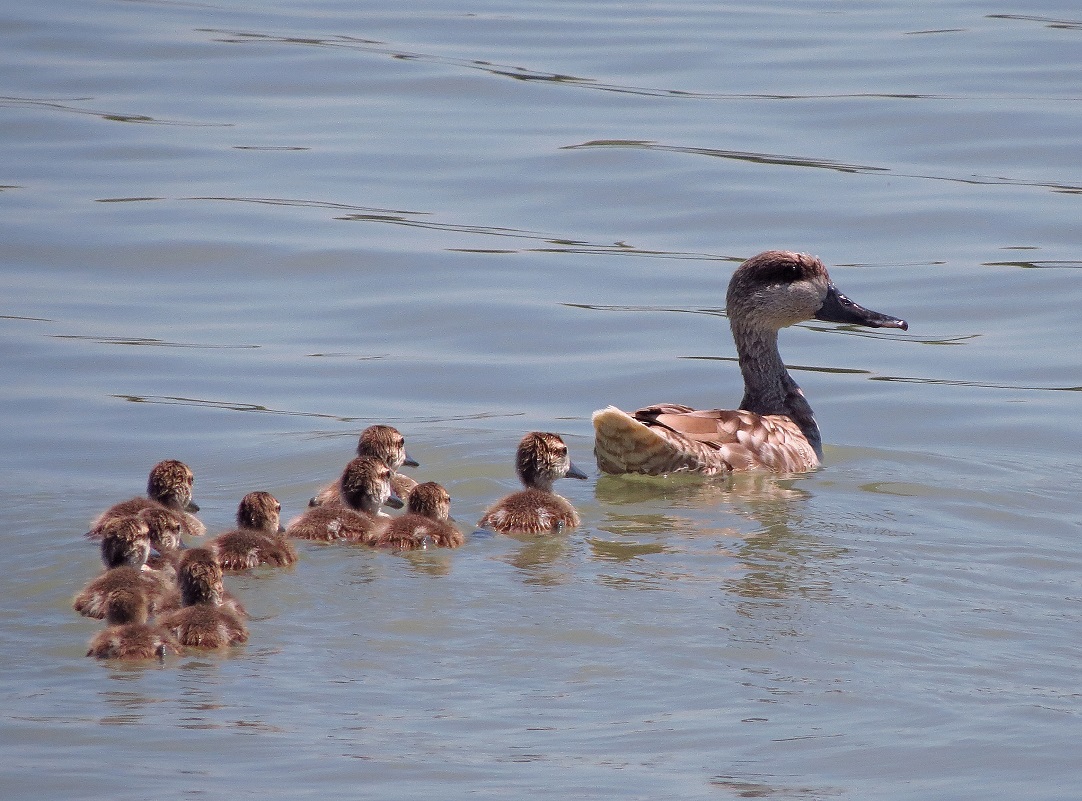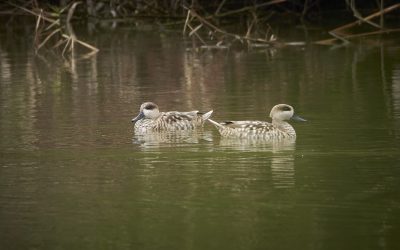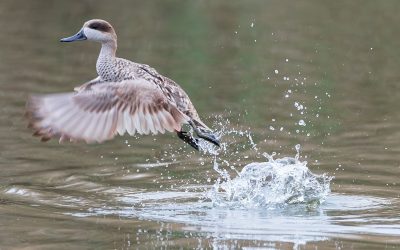Photo: Óscar Aldeguer
The reproduction of the marbled teal (Marmaronetta angustirostris) has reached a record number in the last twenty years with 130 broods (females sighted accompanied by chicks) and 806 chicks born in 2024, according to the most recent data from the species’ working group, coordinated by the Directorate General for Biodiversity, Forests and Desertification of the Ministry for Ecological Transition and the Demographic Challenge (MITECO), with data provided by the Autonomous Regions of Andalusia, Castilla La Mancha, Catalonia, Valencia, the Balearic Islands, Madrid and Murcia.
There are 55 more pairs than those registered in 2023, which represents a 73% increase, and almost double the number of chicks, an encouraging increase in the recovery trend of this duck catalogued as critically endangered in Spain and the most endangered in Europe.
This figure also makes it possible to exceed the target of 125 breeding pairs set by the LIFE Cerceta Pardilla project.
The latest breeding figures for the marbled teal are the highest since 2004 and continue the general upward trend observed since 2021, despite the existence of interspersed years with a lower level of productivity. The number of chicks has also risen again and created a maximum since 2024, with 806 compared to the other recent high of 740 in 2022.
By autonomous communities, Andalusia is the one that contributes the most breeding pairs, 101 with 618 chicks, followed by the Valencian Community with 21 pairs and 139 chicks; the Balearic Islands with 4 pairs and 28 chicks; Castilla-La Mancha with two pairs and 10 chicks; the Community of Madrid, with one pair and two chicks and the Region of Murcia with one pair and eight chicks. It is worth noting that in this last autonomous community the first reproduction of the species since 2008 has been achieved, when it took place in the Laguna de las Moreras, in Mazarrón.
The reproduction of the species has been favored by the hydrological conditions in the Lower Guadalquivir area, due to the abundant spring rains that improved both the levels and the quality of the water in numerous wetlands. On the other hand, in the Valencian Community and Balearic Islands there was a new year of water shortage and a deficit of favorable sites for the reproduction of the species, as occurred in 2023.
In the Hondo Natural Park, in the Valencian Community, in 2024, the Confederación Hidrográfica del Segura purchased the La Raja estate within the framework of the LIFE Cerceta Pardilla. This estate, together with the El Espigar, previously purchased by the organizations ANSE and SEO/BirdLife, means a total of 141 hectares of wetlands for the conservation of the species in one of the priority sites for its survival. This year, in El Espigar, 4 female brown teal have bred thanks to the habitat restoration actions carried out within the framework of the LIFE.
The breeding season of the year 2025 is benefiting from exceptional hydrological conditions, which allow us to predict the consolidation of the positive trend in the reproduction of the species.
CAPTIVE BREEDING
In parallel to the good data on the reproduction of the species, the captive breeding program has allowed, thanks to the coordination of all the partners, the release of 3,042 individuals, three times the number of individuals foreseen in the project.
A total of 95 of these specimens have been equipped with satellite tracking devices to improve knowledge of their movements and threats. In addition, more than 100 nest boxes have been installed to encourage their reproduction.
The Ministry itself, through the Confederación Hidrográfica del Segura and Tragsatec; the Junta de Andalucía, through the Consejería de Sostenibilidad y Medio Ambiente and the Agencia de Medio Ambiente y Agua M.P.; the Generalitat Valenciana, through the Conselleria de Medio Ambiente, Infraestructuras y Territorio; the Autonomous Community of the Region of Murcia, through the Consejería de Medio Ambiente, Universidades, Investigación y Mar Menor, as well as the organisations Sociedad Española de Ornitología (SEO/BirdLife) and the Asociación de Naturalistas del Sureste (ANSE), are partners in the LIFE Cerceta Pardilla project. It has the support of the LIFE Program of the European Union and the Directorate General for Water.




